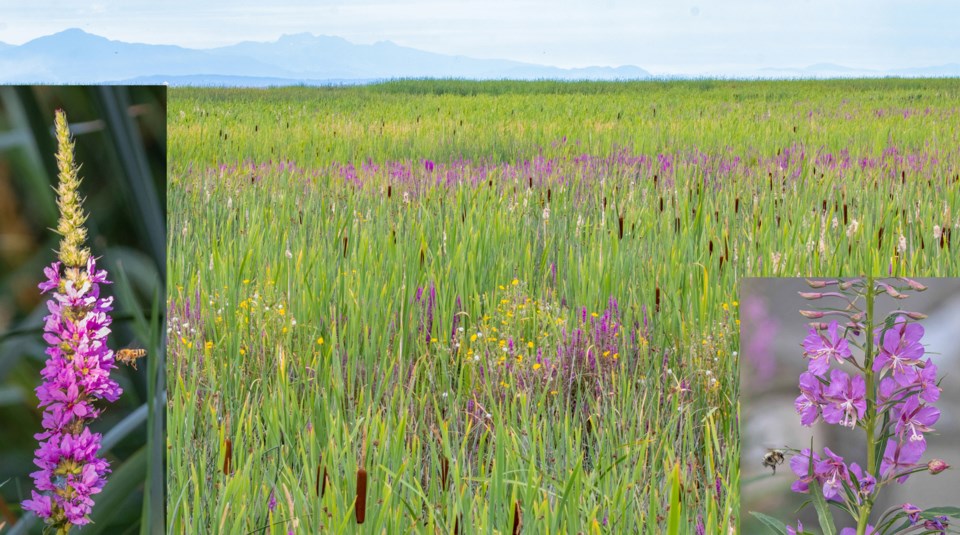As summer advances, we are treated to a changing spectrum of flowers growing along roadsides and in our parks.
Large patches of tall pink flowers blooming from June to fall have traditionally been Fireweed. This plant is an early colonizer of recently exposed land and was one of the earliest plants to appear in areas devastated by the Mount St. Helens eruption.
Even in urban settings Fireweed will colonize vacant lots, as it did in London during the Blitz in the Second World War. How it arrives is no mystery. A single stalk may have 100 flowers, which become a seed capsule with hundreds of minute seeds, each equipped with its own silky-hair parachute to carry it wherever the wind blows.
Fireweed also spreads by underground rhizomes creating large swaths of pink which attract bees and other nectar-lovers. Following forest fires, huge patches of Fireweed help stabilize the soils and persist until trees move in to restore the landscape. These areas can provide a beekeeper with a bonanza that the honey bee turns into delicious, sweet, clear amber honey.
There is however, a new pink of later summer making its mark on our local landscape.
The European Purple Loosestrife first appeared in the Great Lakes area in the early 1800s and has moved steadily westward. It spreads both by seeds and by regeneration of plant stalks, making it difficult to eradicate. Loosestrife displaces native species and gradually fills in wetlands; however, its flowers produce nectar and attract many species, including bees. Unfortunately its honey is dark and “ill-tasting,” so as summer advances and Fireweed flowers fade, the quality of honey in areas invaded by Purple Loosestrife sadly declines.
Plants evolve in concert with their insect populations, usually resulting in biological balances. Having an interloper in our local environment like the “New Pink” will have consequences. The “Flowering Plants in Delta” brochure being produced by the Delta Naturalists Society lists 53 species and, of these, more than 40 per cent are introduced. Globalization is taking place at all levels in our mobile world.




